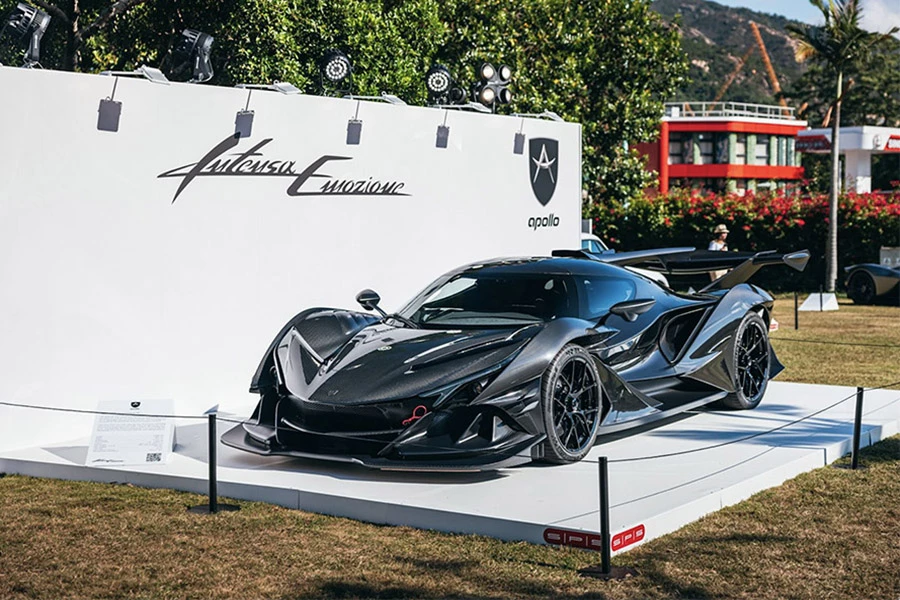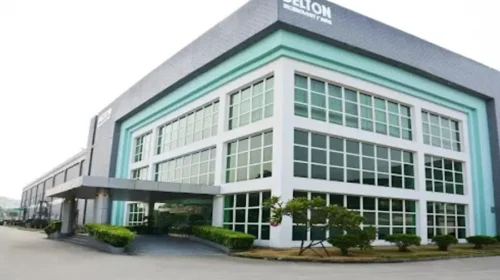Apollo Future: A smart car dreamer in jeweler’s clothing?

With only two vehicles delivered in 2024, the company’s vision of transforming from a watch and jewelry seller to maker of high-tech electric cars looks dubious
Key Takeaways:
- Apollo Future Mobility’s net loss widened by nearly 80% to HK$1.54 billion in 2024
- Jewelry and watch sales accounted for over 85% of its revenue for the year, while it sold only two high-tech electric vehicles that it’s hyping as its future
By Lee Shih Ta
In the high-stakes race for new energy vehicles (NEVs) equipped with all the latest bells and whistles, some companies are soaring like rockets, while others remain grounded even as their engines roar for a takeoff that has yet to come. Apollo Future Mobility Group Ltd. (0860.HK), which has vowed to revolutionize future mobility with its high-end intelligent hypercars, falls squarely into the latter category.
According to its latest annual results, filed April 1, Apollo Future lost HK$1.54 billion ($200 million) last year, 78.8% wider than the HK$860 million it lost in 2023. Despite a 21.8% year-on-year revenue increase to HK$340 million, its gross profit plummeted from HK$63.15 million in 2023 to HK$15.73 million last year. And its gross margin plunged even more to just 4.6% from 22.6% over that time. The company attributed the margin plunge to reduced interest income from loan financing and weak gross margins for its legacy jewelry and watch segment.
While none of that looked too exciting, Apollo Future’s stock surged by over 30% on the day of the announcement to close at HK$0.69. But even after that, the shares were still down slightly over the past six months.
Limited deliveries
Apollo Future positions itself as a smart mobility solutions provider, which is a fancy way of saying a provider of high-end smart cars. But even with “mobility” in its name, the company delivered just two of its Apollo Future Intensa Emozione (IE) hypercars in 2024. In fact, the company never intended to mass produce the model, limiting itself to just 10 units globally. Those 10 sold out upon the car’s 2017 debut, and the two units delivered last year were the last of the very limited edition.
Delivering just 10 cars in eight years, even if it’s a very limited edition, is hardly a sustainable business model. Instead, the company’s primary revenue source remains its legacy business selling jewelry and watches. In 2024, revenue from that business jumped by 22.6% to HK$290 million from HK$237 million in 2023, accounting for 85% of its revenue pie.
Meantime, the company’s automotive business, which includes not only vehicle sales but also related parts, as well as engineering and other services, only recorded revenue of HK$40.60 million for the year, or 11.9% of the total. The company’s other revenue comes from interest from its loan financing business.
Formerly known as WE Solutions, Apollo Future Mobility began as a jewelry and watch retailer before pivoting to electric vehicles (EVs) in 2015. It acquired Japanese EV maker GLM, German automotive solutions provider Ideenion Automobil AG, and German niche hyper car brand Gumper. It then changed its name to Apollo Future Mobility in 2017, aiming to become a player in the fast-developing NEV market.
Unlike traditional NEV makers taking aim at mainstream buyers, Apollo Future aimed to carve out a niche with its “high-performance + intelligent tech + international brand” strategy. But despite such lofty ambitions, the company’s progress has been minimal. It planned to follow its first-generation Apollo Future IE supercar with a new-generation Apollo Future EVO. But that model has been delayed, and the company has gone silent on its advanced engineering G2J prototype, which wasn’t mentioned in the annual results.
Selling out its “key weapon”
Not only was there no mention of car manufacturing progress in the latest results, but the company also sold off one of its core technology holdings last August. That move saw it divest its 12.87% stake in 3D printing company Divergent Technologies for $102 million, taking a HK$106 million loss in the process. The company admitted the sale was necessary due to its own Chinese roots, which may have hampered Divergent Technologies’ pursuit of facility safety approval from the U.S. for confidential national defense contracts.
3D printing technology, particularly its applications in automobile manufacturing, was once hailed as Apollo Future’s key to making up for lost time despite its relatively late arrival to the sector. Divergent Technologies specializes in the rapid manufacture of automotive chassis and key components using metal 3D printing technology. That pioneering technology, which allows for modular design, lightweight construction and shorter development cycles, has attracted the attention of major industry players such as Airbus and Toyota.
Despite its promise, however, large-scale application of 3D printing in the automotive industry has never taken off due to its high cost and low efficiency for use in mass production. As a result, Divergent has yet to enter into any large-scale commercialization projects to date, nor has it found stable profits. The Divergent investment was simply a money burner for Apollo Future in the early stages but later became more of a burden as its losses piled up and it failed to find a mass market.
Selling its Divergent Technologies stake may end a costly burden for Apollo Future, but it also signals the end of the company’s narrative of “mastering disruptive technologies in global automobile manufacturing”.
Since then, the company has never disclosed specific product details or development progress, even as it has discussed how it is working on a next-generation luxury electric vehicle platform. It has yet to release prototypes for its previously teased hardware and software integration, high-performance batteries and modular design.
All of that said, Apollo Future is less a futuristic automaker these days and more a mundane jewelry and watch distributor with automotive aspirations. One of its biggest assets – and boosters – is major shareholder and car enthusiast Justin Ho King Man, son of Edmund Ho Hau-wah, the former top government official from Macao, alongside the company’s other stable of investors from Hong Kong and Macao.
Last December, Apollo Future issued convertible bonds, attracting NingShing Holdings, owned by the municipal government in the Mainland Chinese city of Ningbo, which invested about HK$300 million. If it exercises its right to convert the shares to equity, the Ningbo entity would hold 16% of Apollo Future Mobility, becoming the company’s second largest shareholder after Justin Ho.
Apollo Future’s stock currently trades at a price-to-sales (P/S) ratio of 1.32 times, up significantly from 0.32 times a year ago. But the shares remain stuck in the range between HK$0.40 and HK$0.70. And with no breakthroughs likely anytime soon in its cars or older watch and jewelry business, the company is unlikely to hold out major appeal for new investors anytime soon.
To subscribe to Bamboo Works weekly free newsletter, click here




